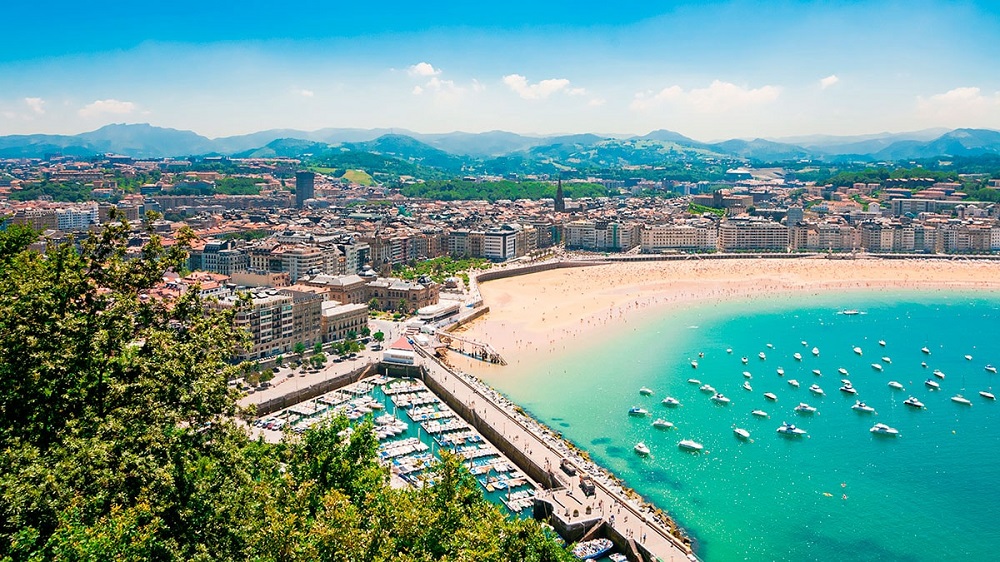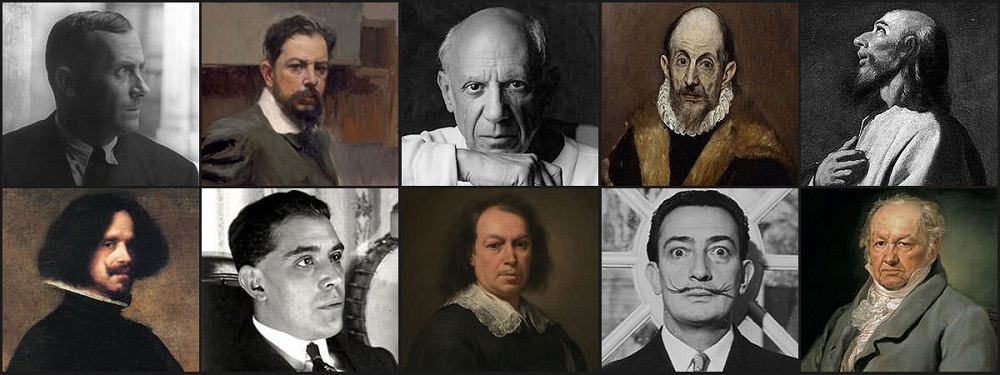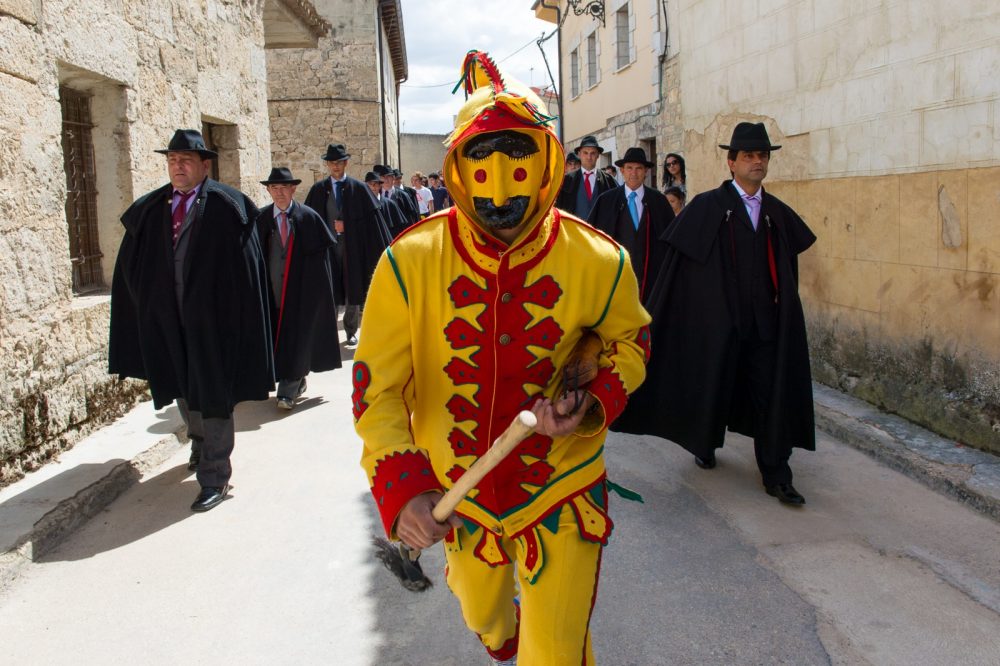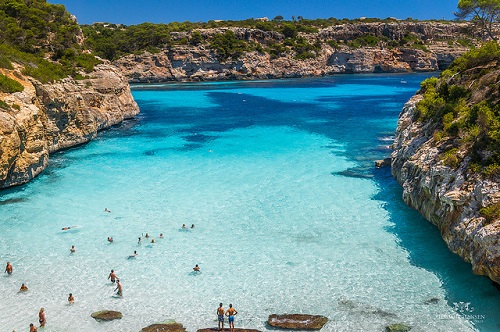San Sebastian or Donostia is one of the largest cities in the Basque Country and is one of the most different cities in Southern Europe. Also, the city possesses a variety of interesting activities. Due to its coastal location and mountainous surroundings, it offers a unique landscape, and it is impossible not to fall for San Sebastian’s Basque charm. Besides, Sunny days spent on its warm sandy beaches are among the attractions of visiting San Sebastian. Take a look at our list of the best things to do in San Sebastian.
1- La Concha Beach:
 via – actunautique
via – actunautique
La Concha Beach situated southwest of Parte Vieja. The beach stretches about a mile wide and offers fascinating views of Monte Urgull, Monte Igueldo, and Santa Clara Island, as well as the interesting architecture that borders La Concha Promenade. This promenade is famous for its decorative, white wrought-iron barrier, is a gateway to other points of interest in the city, including Parte Vieja and Miramar Palace, as well as a few beachside parks.
Furthermore, La Concha beach is the most iconic sight in San Sebastian; with a beautiful white sand beach, a wide shoreline and fascinate turquoise waves safe for swimming. Besides, this charming beach extends for more than a kilometer, and is known as La Perla, overlooks the cityscape of San Sebastian and has an ambiance of elegance.
The shape of the beach explains the name “Concha” that has been given to it. On one side of the bay, you will find the Urgull Mountain, next to the harbor and the city hall, and on the other side of the shell, you will find the Igueldo Mountain. Since the bay is surrounded by mountains, it also perfectly protected against the wind and high waves.
2- Zurriola Beach:
 via – sansebastianturismoa
via – sansebastianturismoa
Zurriola Beach is the second of San Sebastian’s significant beaches, sitting across the Urumea River by the Kursaal auditorium. Bordered by a large breakwater and away from the heart of Donostia.
The Playa de la Zurriola attracts surfers from all over the world because of its challenging waves and surf competitions also the best time for surfing in San Sebastian is during fall and winter. That’s because waves can reach 5 to 6 feet in height. Even if you’re not a surfer, you can still enjoy Zurriola Beach because is the best destination of other sports enthusiasts, and safe form swimming.
3- San Sebastian Aquarium:
 via – viator
via – viator
The San Sebastian Aquarium should be your top place to visit. That’s because the aquarium, appropriately situated right above the ocean’s waters, and considered as one of the most contemporary in Europe, and has a desirable waterside position at the foot of Monte Urgull.
Besides, the Aquarium includes features about 31 different exhibits broken up by region housing more than 200 species of fish, containing bull sharks, turtles, sinister stingrays, and jellyfish. Also, a small museum of marine history displays the bleached skeleton of a whale caught off the Atlantic coast in 1878 and a smattering of captivating whaling and fishing boats that present San Sebastian’s continuing relationship with the sea.
While visiting the aquarium, you will like getting up an up-close view of sea life, especially in the underwater tunnel. At the same time, you will feel this enriched your experience, as it helps give a greater context to the story of the animals that call the aquarium home.
4- The Ayuntamiento of San Sebastian:

via – leschroniquesdelagrenouille
The Ayuntamiento is one of the most majestic buildings of San Sebastian. It is located between La Concha Beach and the old city alongside the magnificent Alderdi Eder Gardens.
Initially, it was built in 1882 as a casino hall; it once hosted parties of the Belle Époque era, when Europe’s bourgeoisie and aristocracy spent their summers in San Sebastian. Later on during the Spanish Civil War, the building set the scene for one of the many fights between nationalists and republicans. Today, bullet holes can still be seen on the facade of the building as a result of the bloody fighting that took place alongside it.
5- San Telmo Museum:
 via – archilovers
via – archilovers
The San Telmo Museum is the biggest museum for Basque history from prehistoric times to modernity. It was first inaugurated in 1902 and is the oldest museum in the Basque Country.
San Telmo is located at the foot of the Urgull Mountain and displays more than 26,000 historic artifacts. The original part of the museum consists of a Dominican convent dating back to the 16th century, while the new building was constructed recently. The mixture of renaissance, Gothic and modern design creates a magnificent play of architectural styles and the extensive collection of Basque artifacts provides an exciting insight into the country’s history.
The Museum offers visitors an overview of Basque culture, the different collection is presented in diverse departments such as fine arts, history, archaeology, and ethnology. The fine arts’ collection presents a wide array of paintings, drawings, engravings, and sculptures. The archaeology department displays an extensive collection of coins, ceramics, and pre-Columbian artifacts, while the history department presents a unique show on the history of weapons from the 15th century to the present day.
6- La Catedral del Buen Pastor:
 via – iubilaeummisericordiae
via – iubilaeummisericordiae
The cathedral is the largest religious church in San Sebastian. The church made of sandstone harvested from Monte Igueldo and with a tapering spire that serves as a local landmark. Besides, the cathedral was initiated in 1897 by Basque architect Manuel de Echave and was influenced by the style of medieval German and French churches.
Today it is home of the diocese of San Sebastian and is considered one of the most considerable religious buildings in the Basque country. The organ consists of more than 10,000 whistles, making it one of the biggest in Europe. The neogothic architecture shows the artistic skillfulness of its builders.
A significant feature “The Cross of Peace” that adorns the main façade of the cathedral created by the sculptor Eduardo Chillida, based on the Latin cross, the cathedral has three naves and the interior is awash with light flooding in through the stained-glass windows by Juan Bautista Lázaro; vast chandeliers hang down from the vaulted roof and rose windows illuminate both ends of the transept. The organ was installed in 1954 and has more than 9,000 pipes, making it one of the largest in Europe.
7- Santa Clara Island:
 via – hotelmonteulia
via – hotelmonteulia
Santa Clara represents one of the most idyllic spots in the city and is perfect for a picnic, and it is a lovely little island in the Basque Country of northern Spain.
The island has a magnificent location in the heart of the beautiful la Concha beach and between the famous mountains Monte Urgull and Monte Igueldo. During the 16th century, it was used as a quarantine area for those suffering from the plague. Now this beautiful and green island is one of the most popular attractions in the city, swim in the clear waters of its lovely small bay enjoy stunning views and it is a very lively and safe beach has lifeguard patrols during the summer months.
During your visit to Santa Clara, take long strolls around the island. You’ll pass various picturesque spots along the way, with picnic tables and benches where you can sit and rest while enjoying the panoramic views of the city of San Sebastian, the sea and the mountains.
8- The Urgull Mountain:
 via – sansebastianturismoa
via – sansebastianturismoa
The Urgull Mount is the most important historical heritage in the city. Located in the very center of San Sebastian, at the top of the mount you can enjoy the fascinating views or to see the sacred heart statue presiding over the summit.
On the top of the mountain, you can find a small castle called La Mota Castle dates back to the 12th century; containing some fortifications and cannons. the castle was declared National Historical and Artistic Monument in 1921by a Royal Decree. In 1950, the statue of the sacred heart was made, and it will place on the top of the castle five years later. Throughout these past years, different reconstruction and recovery works have been completed so the area looks exactly as it does today, capturing the attention of every visitor who comes to the city.
Furthermore, Hiking is a recommended activity in Urgull Mount. On one hand, you can enjoy its fabulous views, doubtless the best ones along with the ones you get from Igueldo Mount. On the other hand, you will be able to find out more about the history of San Sebastian City and contemplate La Mota Castle with its remaining fortification walls and cannons.
In brief, Urgull is home to some of the most significant historic heritages of the city. The New Promenade is one of the most beautiful and tranquil walkways in San Sebastian surrounding the entire mountain and following the Cantabrian Sea from the Aquarium to the end of the Old Town.


 Top 10 Most Famous Spanish Artists and their Arts
Top 10 Most Famous Spanish Artists and their Arts
 El Colacho, the Baby Jumping Festival in Murcia Spain
El Colacho, the Baby Jumping Festival in Murcia Spain
 Discover The Most Beautiful Places In Mallorca, Spain
Discover The Most Beautiful Places In Mallorca, Spain